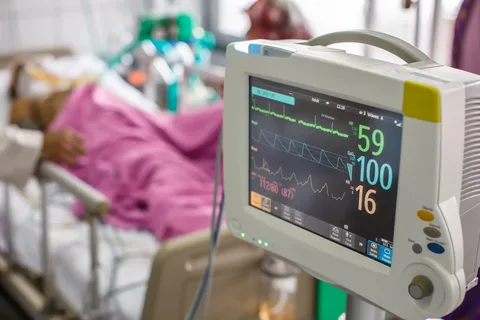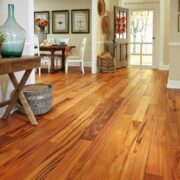
Ventilation systems play a crucial role in creating a healthy indoor environment. Proper ventilation helps to remove pollutants, allergens, and excess moisture from the air, ensuring that you and your loved ones breathe fresh and clean air. In this shopping guide, we will explore reliable mechanical ventilation systems that can improve the air quality in your home or business.
Understanding the Importance of Good Ventilation
Good ventilation is crucial for maintaining a healthy atmosphere indoors. Without it, the air we breathe can quickly become a reservoir for pollutants such as dust particles, animal fur, and harmful emissions from household products, known as volatile organic compounds (VOCs). These contaminants are not just nuisances; they have the potential to worsen or even trigger serious health issues such as allergic reactions, asthma attacks, and other respiratory conditions.
Additionally, a lack of adequate airflow can contribute to an environment ideal for mould and mildew growth, encouraged by high humidity levels. This not only poses a health risk but can also cause damage to the structure and fixtures of a building. By adopting efficient ventilation systems, you are committing to safeguarding the well-being of occupants by ensuring the continuous exchange of air, diluting and expelling polluted indoor air and replacing it with cleaner outdoor air. This constant renewal and circulation are crucial in maintaining an environment that is comfortable and conducive to good health.
The Basics of Ventilation Systems
Ventilation systems are engineered to promote airflow within indoor spaces, which is crucial for replacing stale, polluted air with fresh, clean air from outside. These systems are categorised mainly into exhaust, supply, and balanced systems. Exhaust ventilation strategies focus on drawing air out of the building to reduce the concentration of contaminants and moisture. This method is particularly effective in areas where pollution sources are concentrated, such as kitchens or bathrooms. On the other hand, supply ventilation introduces external air into the building, which can be filtered to remove pollutants and preconditioned to adjust temperature and humidity levels, ensuring that the incoming air contributes positively to the indoor environment.
Balanced ventilation systems represent a hybrid approach, integrating exhaust and supply mechanisms to maintain air quality while optimising energy efficiency. These systems are designed to manage the overall airflow within the premises, ensuring that an equal amount of stale air is expelled as fresh air is brought in, preserving indoor pressure balance. Notably, balanced systems can be further enhanced with heat recovery ventilators (HRVs) or energy recovery ventilators (ERVs).
These recycle energy from the extracted air to temper the incoming fresh air, significantly reducing heating and cooling demands. Selecting the appropriate ventilation system depends on various factors, including the specific requirements of the space, local climate conditions, and the occupants’ needs, ensuring that the chosen solution effectively supports a healthy and comfortable indoor atmosphere.
Features to Look for in a Ventilation System
Several pivotal features warrant close attention when embarking on the quest for an optimal ventilation system. Opt for a unit that boasts modifiable airflow settings to cater to the diverse needs of different rooms and varying occupant numbers. Energy efficiency is paramount; a system that minimises energy consumption whilst maintaining adequate air circulation can significantly reduce utility bills and environmental impact.
Quiet operation is another crucial factor, as systems that operate discreetly enhance comfort without intruding on daily activities or sleep. Additionally, the dimension of the area requiring ventilation should guide the choice of the system, ensuring it possesses adequate capacity for effective air exchange. Advanced options equipped with air purification filters offer an added layer of defence against pollutants, whilst humidity sensors can help maintain optimal moisture levels, preventing mould growth and mildness.
Programmable timers and intelligent features allowing remote management can provide convenience and flexibility, enabling users to tailor the system’s operation to their lifestyle. Prioritising these features will guide you towards a ventilation system that improves air quality and aligns with your specific needs and preferences, thus fostering a healthier and more enjoyable indoor environment.
Top Ventilation Systems for Homes
For individuals keen on enhancing the air quality within their residences, there is an array of distinguished ventilation systems at their disposal. Among the highly recommended solutions are Heat Recovery Ventilators (HRVs) and Energy Recovery Ventilators (ERVs), which are celebrated for their proficiency in conserving energy whilst facilitating a constant influx of fresh outdoor air. These systems are adept at recovering heat or power from the outgoing stale air and utilising it to temper the incoming fresh air, thereby offering an efficient method to maintain a comfortable indoor environment year-round.
Whole-house fans present an alternative, especially appealing for its economic benefits. This system operates by expelling hot, stale air through attic vents, thus drawing cooler outside air through open windows. This significantly enhances a home’s overall ventilation without the high costs associated with air conditioning. Each system offers unique benefits tailored to different household needs and preferences, ensuring that homeowners can select an option that best aligns with their requirements for a healthier living space.
Ventilation Solutions for Businesses
For businesses, ensuring pristine indoor air quality is paramount, not just for the comfort but also for the health and productivity of employees and clientele. Due to their size and diverse activities, commercial premises demand robust ventilation strategies. Solutions like rooftop units, designed to expel stale air whilst drawing in fresh outdoor air, are widely used for their efficiency in large spaces. Make-up air units are crucial in maintaining indoor air pressure balance, especially in environments where exhaust systems are heavily utilised, such as kitchens in restaurants or workshops.
Strategically placed exhaust fans can significantly reduce humidity, odours, and airborne contaminants, which is critical in settings like bathrooms and commercial kitchens. Tailoring these systems to a business’s specific requirements ensures optimal performance. For instance, an office space might benefit from a different ventilation approach compared to a manufacturing plant or a retail environment.
Engaging with a specialist to assess the unique needs of your commercial space can facilitate the selection of a suitable ventilation system, ensuring a healthy and productive environment for all occupants.
Innovative Technologies in Mechanical Ventilation Systems
In mechanical ventilation, innovation continues to propel the industry forward, introducing technologies to enhance efficiency, air quality, and user control. Smart ventilation systems represent a significant advancement, incorporating IoT (Internet of Things) capabilities to facilitate remote monitoring and management of air flow. They adjust automatically to the number of occupants and their activity levels, ensuring optimal air quality with minimal energy consumption.
Additionally, integrating air quality sensors in modern ventilation systems allows for real-time detection of pollutants, triggering the system to act when levels exceed predefined thresholds. Such systems often include sophisticated filters capable of capturing a broader range of contaminants, including ultrafine particles, thus offering superior protection against indoor pollution.
Photocatalytic oxidation (PCO) technology is another groundbreaking feature introduced into ventilation systems. This technology uses UV light to activate a catalyst, turning pollutants into harmless substances like water and carbon dioxide, thereby purifying the air at a molecular level. These innovations highlight the industry’s commitment to developing solutions that improve indoor air quality, reduce environmental impact, and enhance user convenience and well-being.
Installation and Maintenance Tips
Ensuring your ventilation system operates at its best requires careful installation and diligent upkeep. Engaging a certified HVAC technician for the system’s installation is strongly advised. A professional’s expertise ensures that the setup aligns with industry standards, thus optimising the system’s efficiency and longevity. Following the installation, maintaining a routine check on the system’s components, particularly the air filters, is paramount. Air filters should be cleaned or replaced at regular intervals, ideally every three to six months, depending on the air quality and the frequency of system use.
This action prevents the accumulation of dust and debris, which can impede airflow and diminish the system’s effectiveness. Moreover, periodic inspections can uncover potential issues that, if addressed, may escalate into more significant concerns. Such maintenance checks include assessing the system for any signs of wear and tear, ensuring unobstructed vents, and verifying that all mechanical parts function correctly. Adhering to these maintenance tips not only preserves indoor air quality but also extends the life of the ventilation system, guaranteeing a healthier indoor environment.
Where to Shop for Ventilation Systems
Identifying a trusted provider is crucial when in the market for ventilation systems. Selecting a vendor renowned for delivering premium-quality solutions and exceptional customer support is essential. A comprehensive assortment of products from reputable manufacturers is a crucial indicator of a reliable supplier, as it suggests a commitment to catering for a broad range of needs and preferences. Additionally, providing installation services and ongoing maintenance agreements can be a significant advantage, offering peace of mind that your system will be correctly set up and maintained over its lifespan.
Online retail platforms, specialists in HVAC (Heating, Ventilation, and Air Conditioning) services, and home improvement outlets represent viable avenues for procuring the ideal ventilation system for residential and commercial settings. These sources frequently present an extensive selection of options, ensuring you can find a system that aligns perfectly with your requirements and budgetary considerations. Engaging with knowledgeable sales or technical support teams can also provide valuable insights, helping to refine your choice based on the specific characteristics of your space and ventilation needs.
Prioritising these factors in your search will guide you to a supplier that can provide a suitable system and support you through the selection, installation, and maintenance process.
Conclusion
Embarking on the journey to enhance indoor air quality through procuring a ventilation system marks a pivotal step towards securing a healthier and more comfortable living or working space. With a spectrum of options at your disposal, each designed to cater to specific environmental needs and energy efficiency goals, the pathway to improved air quality is accessible and achievable. Making an informed choice requires consideration of the unique characteristics of your space, alongside a keen understanding of the various technologies and features that modern ventilation systems offer. As you navigate the selection process, remember that the value of fresh, clean air and the well-being it brings to your environment is immeasurable, making the effort to find the perfect system entirely worthwhile.
FAQS
Q: How frequently should the filters in my mechanical ventilation system be changed?
A: The recommendation is to change the air filters in your system every three to six months. However, this can vary based on the system’s usage rate and indoor air quality. A more frequent replacement may be necessary for environments prone to higher pollution levels or with pets to maintain optimal air quality.
Q: Can I fit a ventilation system myself, or is it advisable to engage a professional?
A: Some simpler ventilation systems may be within the capabilities of a keen DIY enthusiast. Nevertheless, for most systems, particularly those that are more complex or require integration into existing HVAC systems, enlisting the services of a professional HVAC technician is advisable. They possess the requisite skills and knowledge to ensure the installation is carried out correctly, which is crucial for the system’s efficiency and longevity.
Q: Does the government offer financial incentives or rebates for installing energy-efficient ventilation systems?
A: Numerous government programmes exist to encourage the adoption of energy-efficient solutions, including ventilation systems. These incentives can take the form of rebates, tax credits, or other financial benefits to offset the initial costs of purchasing and installing energy-efficient systems. The availability of such programmes can vary, so it’s worth consulting local government websites or energy advisory services to identify any schemes you might be eligible for.









